 W
WPieter van Abeele was a Dutch medallist and coiner in Amsterdam.
 W
WAbraham Abramson was a Prussian coiner and medallist. Born into a Jewish family, he later converted to Christianity.
 W
WRobert Ingersoll Aitken was an American sculptor. Perhaps his most famous work is the West Pediment of the United States Supreme Court building.
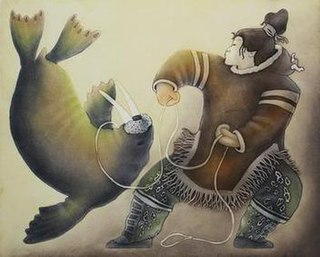 W
WGermaine Arnaktauyok is an Inuk printmaker, painter, and drawer originating from the Igloolik area of Nunavut, then the Northwest Territories. Arnaktauyok drew at an early age with any source of paper she could find.
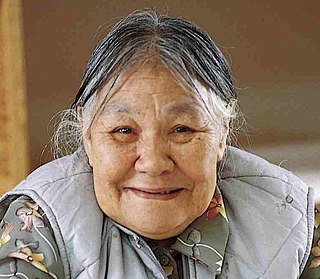 W
WKenojuak Ashevak, was an Inuit artist. She is regarded as a pioneer of modern Inuit art.
 W
WBache & Company was a securities firm that provided stock brokerage and investment banking services. The firm, which was founded in 1879, was based in New York, New York.
 W
WJoseph Alexis Bailly was an American sculptor who spent most of his career in Philadelphia, Pennsylvania. He taught briefly at the Pennsylvania Academy of the Fine Arts, which has a collection of his sculpture. His most famous work is the statue of George Washington in front of Independence Hall.
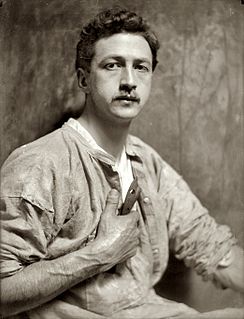 W
WChester A. Beach was an American sculptor who was known for his busts and medallic art.
 W
WSir Joseph Edgar Boehm, 1st Baronet, was a medallist and sculptor, best known for the "Jubilee head" of Queen Victoria on coinage, and the statue of the Duke of Wellington at Hyde Park Corner. A speciality of Boehm's was the portrait bust; there are many examples of these in the National Portrait Gallery. He was often commissioned by the Royal Family and members of the aristocracy to make sculptures for their parks and gardens. His works were many, and he exhibited 123 of them at the Royal Academy from 1862 to his death in 1890.
 W
WJohn Gutzon de la Mothe Borglum was an American sculptor most widely known for the colossal sculpture Mount Rushmore National Memorial. He was also associated with various other public works of art, including Stone Mountain in Georgia, the statue of Union General Philip Sheridan in Washington, D.C., as well as a bust of Abraham Lincoln which was exhibited in the White House by Theodore Roosevelt and which is now held in the United States Capitol crypt in Washington, D.C. Borglum was also deeply involved in Ku Klux Klan politics.
 W
WJoseph-Pierre Braemt was a Belgian medalist and coin designer.
 W
WVictor David Brenner was a Litvak-American sculptor, engraver, and medalist known primarily as the designer of the United States Lincoln Cent.
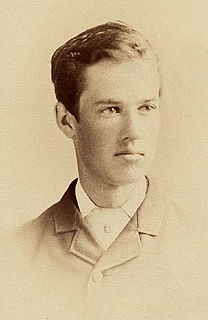 W
WCyrus Edwin Dallin was an American sculptor best known for his depictions of Native Americans. He created more than 260 works, including the equestrian statue of Paul Revere in Boston, Massachusetts; the Angel Moroni atop Salt Lake Temple in Salt Lake City, Utah; and his most famous work, Appeal to the Great Spirit, at the Museum of Fine Arts, Boston. He was also an Olympic archer.
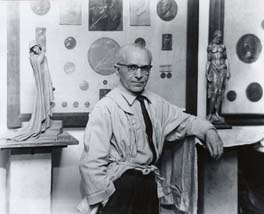 W
WAnthony (Antonio) de Francisci was an Italian-American sculptor who designed a number of United States coins and medals. His most famous design was the Peace Dollar, which was first minted in 1921.
 W
WJohn Doubleday was a British craftsperson, restorer, and dealer in antiquities who was employed by the British Museum for the last 20 years of his life. He undertook several duties for the museum, not least as a witness in criminal trials, but was primarily their specialist restorer, perhaps the first person to hold the position. He is best known for his 1845 restoration of the severely-damaged Roman Portland Vase, an accomplishment that places him at the forefront of his profession at the time.
 W
WJohn F. Flanagan was a sculptor who was widely known for his statuary and plaquettes but recognized foremost for his designs of coinage and commemorative medals. Among his best known designs are the obverse (front) and reverse of the United States quarter dollar featuring the profile of George Washington, a coin that has been in continuous circulation with some modifications since 1932.
 W
WBenjamin Franklin was one of the Founding Fathers of the United States. A polymath, he was a leading writer, printer, political philosopher, politician, Freemason, postmaster, scientist, inventor, humorist, civic activist, statesman, and diplomat. As a scientist, he was a major figure in the American Enlightenment and the history of physics for his discoveries and theories regarding electricity. As an inventor, he is known for the lightning rod, bifocals, and the Franklin stove, among other inventions. He founded many civic organizations, including the Library Company, Philadelphia's first fire department, and the University of Pennsylvania.
 W
WJames Earle Fraser was an American sculptor during the first half of the 20th century. His work is integral to many of Washington, D.C.'s most iconic structures.
 W
WJuliette May Fraser was an American painter, muralist and printmaker. She was born in Honolulu, which was then the capital city of the Kingdom of Hawaii. After graduating from Wellesley College with a degree in art, she returned to Hawaii for several years. She continued her studies with Eugene Speicher and Frank DuMond at the Art Students League of New York and at the John F. Carlson School of Landscape Painting in Woodstock, New York. She returned to Hawaii to teach, like her parents who had both come to Hawaii as educators. Fraser designed the Hawaii Sesquicentennial half dollar, which was engraved by Chester Beach and issued in 1928.
 W
WLaura Gardin Fraser was an American sculptor and the wife of sculptor James Earle Fraser.
 W
WEmil Fuchs, MVO, was an Austrian and American sculptor, medallist, painter, and author who worked in Vienna, London and New York. He painted portraits of Queen Victoria and Edward VII and was fashionable among London high society in the early 20th century.
 W
WYvette Gastauer-Claire is a Luxembourg sculptor and medallist who has designed coins for Luxembourg, including euros. Her sculptures can be seen in buildings and parks in Luxembourg and the surroundings.
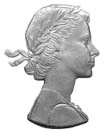 W
WMary Gaskell Gillick was a sculptor best known for her effigy of Elizabeth II used on coinage in the United Kingdom and elsewhere from 1953 to 1970.
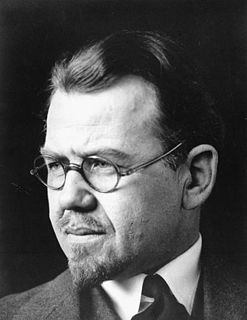 W
WEmanuel Otto Hahn was a German-born Canadian sculptor and coin designer. He taught and later married Elizabeth Wyn Wood. He co-founded and was the first president of the Sculptors' Society of Canada.
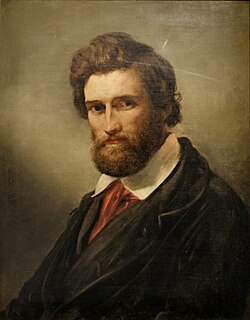 W
WHarald Conradsen was a Danish sculptor and medallist. He was chief medallist at the Royal Mint from 1873 to 1901. Other works by Conradsen include the Royal Danish Academy of Fine Arts' Eckersberg Medal and the University of Copenhagen's gold medal.
 W
WCharles Keck was an American sculptor from New York City, New York.
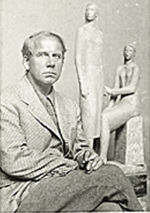 W
WHenry Kreis (1899–1963) was an American sculptor.
 W
WConrad Heinrich Küchler was a German engraver who from 1793 until his death worked as a designer of coinage and medals for the manufacturer and mint owner Matthew Boulton.
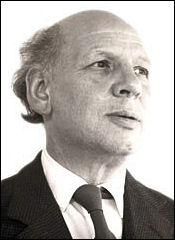 W
WArnold Machin O.B.E., R.A. was a British artist, sculptor, and coin and postage stamp designer.
 W
WSir Edgar Bertram Mackennal, usually known as Bertram Mackennal, was an Australian sculptor and medallist, most famous for designing the coinage and stamps bearing the likeness of George V. He signed his work "BM".
 W
WHermon Atkins MacNeil was an American sculptor born in Everett, Massachusetts. He is known for designing the Standing Liberty quarter, struck by the Mint from 1916-1930; and for sculpting Justice, the Guardian of Liberty on the east pediment of the United States Supreme Court building.
 W
WRaphael David Maklouf is a British sculptor, best known for designing an effigy of Queen Elizabeth II used on the coins of many Commonwealth nations.
 W
WAuguste-François Michaut was a French coin engraver of France and Holland, a medallist and sculptor.
 W
WJoseph Jacinto Mora was a Uruguayan-born American cartoonist, comics artist, sculptor, illustrator, and cowboy, who lived with the Hopi and wrote extensively about his experiences in California. He was an artist-historian, sculptor, painter, photographer, illustrator, muralist and author. He has been called the "Renaissance Man of the West".
 W
WThomas Humphrey Paget OBE was an English medal and coin designer and modeller. Paget's designs are indicated by the initials 'HP'.
 W
WTitian Ramsay Peale was an American ornithologist, entomologist, photographer, and explorer from Philadelphia, Pennsylvania. He was a scientific illustrator whose paintings and drawings of wildlife were known for their beauty and accuracy.
 W
WPhanes name is attested on a series of early electrum coins, the most ancient inscribed coin series at present known, of Caria, Asia Minor. This group of coins has a Greek legend reading "Phaenōs eimi sēma" (retrograde) which can be translated either as "I am the badge of Phanes" or as "I am the sign of light" or maybe "I am the tomb of light" or "I am the tomb of Phanes". The celebrated coins of Phanes are known to be amongst the earliest of Greek coins, a hemihekte of the issue was found in the foundation deposit of the Temple of Artemis at Ephesus.
 W
WBenedetto Pistrucci was an Italian gem-engraver, medallist and coin engraver, probably best known for his Saint George and the Dragon design for the British sovereign coin. Pistrucci was commissioned by the British government to create the large Waterloo Medal, a project which took him thirty years to complete.
 W
WBela Lyon Pratt was an American sculptor from Connecticut.
 W
WBrenda Putnam was a noted American sculptor, teacher and author.
 W
WIan Rank-Broadley FRBS is a British sculptor who has produced many acclaimed works, among which are several designs for British coinage.
 W
WAugustus Saint-Gaudens was an American sculptor of the Beaux-Arts generation who embodied the ideals of the American Renaissance. Raised in New York City, he traveled to Europe for further training and artistic study. After he returned to New York, he achieved major critical success for his monuments commemorating heroes of the American Civil War, many of which still stand. Saint-Gaudens created works such as the Robert Gould Shaw Memorial on Boston Common, Abraham Lincoln: The Man, and grand equestrian monuments to Civil War generals: General John Logan Memorial in Chicago's Grant Park and William Tecumseh Sherman at the corner of New York's Central Park. In addition, he created the popular historicist representation of The Puritan.
 W
WFelix Oscar Schlag was a German born American sculptor who was the designer of the United States five cent coin in use from 1938 to 2004.
 W
WHans K. Schuler was a German-born American sculptor and monument maker. He was the first American sculptor ever to win the Salon Gold Medal. His works are in several important museum collections, and he also created many public monuments, mostly for locations in Baltimore, Maryland and in the Washington, D.C. area. For over a quarter of a century he served as president of the Maryland Institute College of Art.
 W
WCoert Steynberg was a renowned South African sculptor who worked in stone, marble, bronze, copper and wood. His work is represented nationwide and internationally, including a statue of Bartholomew Dias in South Africa House in London, a monument to Andries Pretorius in Graaff-Reinet, and the Peace of Vereeniging monument in Vereeniging.
 W
WThomas Sully was an American portrait painter. Born in Great Britain, he lived most of his life in Philadelphia, Pennsylvania. He painted in the style of Thomas Lawrence. His subjects included national political leaders such as United States presidents Thomas Jefferson, John Quincy Adams, and Andrew Jackson, Revolutionary War hero General Marquis de Lafayette, and many leading musicians and composers. In addition to portraits of wealthy patrons, he painted landscapes and historical pieces such as the 1819 The Passage of the Delaware. His work was adapted for use on United States coinage.
 W
WLászló Szlávics is a Hungarian sculptor and medallic artist. He publishes his works under the names László, ifj. Szlávics or Laszlo Szlavics Jr.László Szlávics jr. has set several new norms in Hungarian medallic art. It was presumably not his express aim, but he was merely following the dictates of his innovative mind to do something new not yet found in the trade. He is heading in this direction, with the sure – and literally tangible – conviction that at the extremes, on the limits of the art form there is still a lot to be searched – and found out.
 W
WNicolas-Pierre Tiolier was a French sculptor and engraver of coins and medals.
 W
WAnton Vasyutinsky - Ukrainian and Russian painter, prominent designer of coins and medals in the Russian Empire and Soviet Union, professor of Imperial Academy of Arts in Saint Petersburg.
 W
WFrank Vittor (January 6, 1888 – January 24, 1968) was an American sculptor, known for his "preference for the heroic and colossal".
 W
WOtte Wallish (1903–1977) was a Czech emigre to Israel who established himself as a graphic designer and contributed to the symbolic self-representation of the Jewish state.
Adolph Alexander Weinman was a German-born American sculptor and architectural sculptor.
 W
WStanley Witten is a Canadian artist and engraver. Witten has received national recognition in Canada for his coin designs, including Big Maple Leaf in 2003, and the Terry Fox loonie in 2005.
 W
WJoseph Wright, born in Bordentown, New Jersey, was a portrait painter who was affiliated with the United States Mint in the late 1700s. It is thought that either he or Henry Voigt designed the Liberty Cap Cent, although most historians and numismatists today credit the design to Wright. He also presumably designed the 1792 Quarter dollar pattern. He was George Washington's original choice for the Chief Engraver of the Mint, but he died before being inducted into the position.
 W
WLeonard Charles Wyon was a British engraver of the Victorian era most notable for his work on the gold and silver coinage struck for the Golden Jubilee of Queen Victoria in 1887 and the bronze coinage of 1860 with the second ("bun") head portrait, in use from 1860 to 1894.
 W
WWilliam Wyon, was official chief engraver at the Royal Mint from 1828 until his death.
 W
WJuozas Zikaras was a Lithuanian sculptor and artist, who created the design for pre-war Lithuanian litas coins. He is considered to be one of the first professional Lithuanian sculptors.